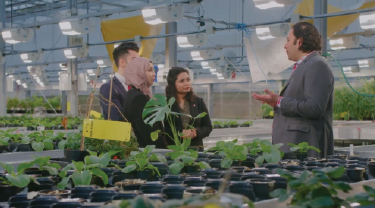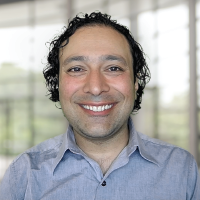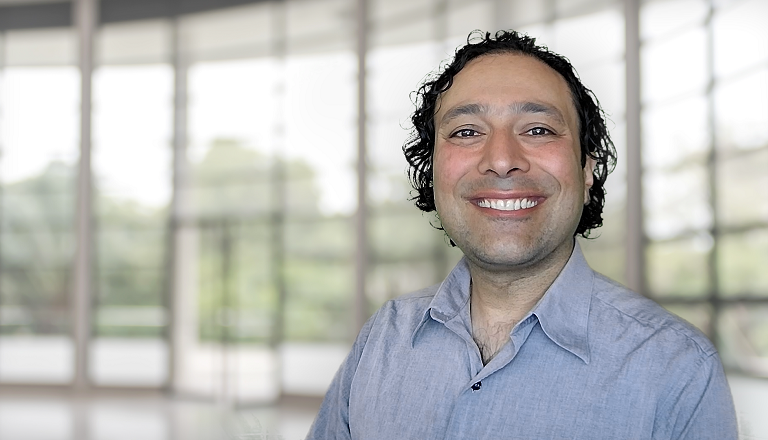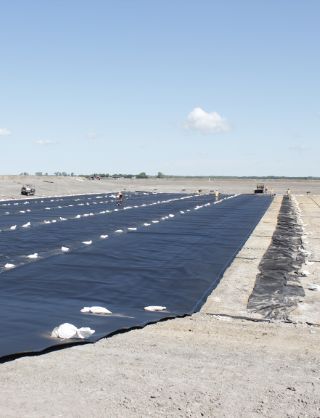A global leader in agri-technology, Terramera makes products enabled by our green chemistry and digital technology platforms that can significantly reduce reliance on environmentally harmful synthetic pesticides and help fight climate change.
Our goal is to transform the way food is grown and make farming healthier, more productive and sustainable. We’re so confident in the potential of our patented technology that we’ve set “Big Hairy Audacious Goals (BHAGs),” a term derived from the 1994 book, Built to Last: Successful Habits of Visionary Companies, by Jim Collins and Jerry Porras. It means setting compelling, long-term targets that will excite and energize the whole company.
Our BHAGs include reducing the global use of synthetic pesticides by 80% by 2030, while increasing farm productivity and profitability at the same time.
The seed for Terramera—which means “our earth”—was planted during an argument I had with a friend in 2009. I was in law school and involved in helping bring the 2010 Winter Olympics to Vancouver. My friend argued that the Olympics create many unintended environmental consequences. He pointed out how bedbugs were virtually unknown in Australia before the 2000 Summer Olympics in Sydney, when athletes and visitors brought them to the city, and they became a problem pest.
Many synthetic chemical pesticides have become ineffective against bedbugs because the insects have developed immunity to them. And, he claimed, there are no effective natural pest solutions as alternatives. That summer, I drew on my studies in genetics and biotechnology and dove into a research project to see if I could prove my friend wrong about natural solutions.
This focus led me to research neem oil, a naturally occurring compound that showed potential for controlling insects, like bedbugs. Neem oil has many uses in natural medicine, especially in India, where the neem tree is known as “the village pharmacy.” It’s less widely used in the West, but found in various natural health products, including body creams and cosmetics.
Studies found that spraying the bugs with neem oil controlled them, but not well. Follow-up studies looked at the effectiveness of injecting the bugs with the oil—obviously, not a scalable solution. But it sparked a lightbulb moment for me: “Is the problem that the neem oil isn’t sufficiently effective, or that it’s not getting to the right place efficiently?”
For example, if you have a headache, you’re not going to stand under a shower of Aspirin dissolved in water. Sure, you might eventually absorb enough of the active ingredient through your skin to relieve your headache, but it’s not an efficient treatment. And, most of the Aspirin will wash down the drain and accumulate in the environment. That’s essentially what happens now in agriculture with many of the agrochemicals we spray on fields.
In a lab in my basement, I started researching ways to increase the bedbug’s absorption of neem oil by combining it with other naturally occurring molecules. Bedbugs have a thick outer skin that prevents direct absorption. My goal was to find a naturally occurring molecule to hold the bedbug’s breathing channels open to deliver the active ingredient that way. This delivery-based approach led to the first generation of our patented Actigate™ technology, which increases the performance and consistency of active ingredients by increasing their uptake and delivering them directly into target organisms.
By late 2010, our research on effectively using neem oil for bedbugs reached the United States Department of Agriculture (USDA). Mandated by the U.S. Congress to find effective biopesticide solutions for controlling bedbugs, the USDA invited us to present our research. They were so impressed that they allowed us to use their labs and testing partners and helped us understand the U.S. regulatory system to fast-track approval of our product.
Our testing data showed our product had consistent 100% efficacy at killing bedbugs and their eggs. When we presented these results to the U.S. Environmental Protection Agency (EPA), we were told they’d never seen or approved a product—let alone a natural solution—with such highly effective and consistent results. We received EPA approval early in 2012 and launched our CIRKIL® product for pest management professionals later that year, and followed up with our PROOF ® bedbug product for the home consumer market.
After our success in natural solutions for the pest control market, we turned our attention to our biggest potential market: Agriculture. In 2018, we received EPA approval to launch RANGO™, designed for broad-range control of insects, mites and fungus on a wide range of important crops. The product, developed with the help of a $1.9 million investment from Sustainable Development Technology Canada (SDTC), has been well-received and we continue to sell out our production runs.
As we were creating the technology that enabled our growing product line, we also developed a broad portfolio of intellectual property (IP) based on our patent protected Actigate™ delivery technology. Rather than hiring a team of scientists to test different combinations of active ingredients with delivery molecules one at a time, we developed software and machine learning tools that would enable us to better understand the chemistry and what combinations would be most effective. We now hold a global portfolio of more than 200 patents and patent applications protecting our technology that we can license to other manufacturers for their applications.
The global market for chemical pesticides is more than $80 billion annually, of which more than 90% are synthetic chemicals. We decided Terramera could have an exponential impact on the growth of biopesticides and reduction of synthetic chemicals, and that we could catalyze this transition by licensing our IP to other manufacturers around the world to use in their formulations. For example, we recently announced a collaboration with a manufacturer of sustainable crop protection products in California to incorporate Actigate™ technology in their product line.
We connected with EDC in 2014 through a Global Affairs Canada Technology Accelerator Program in New York. Their expertise and advice were key to helping us understand the tools we needed to build a successful business in the U.S.
We also began using EDC Credit Insurance to protect our receivables in the U.S., after losing revenue when we didn’t get paid for orders. We gained peace of mind by securing our orders from U.S. retailers and distributors. This let us concentrate on growing our U.S. business relationships.
In 2016, EDC became an investor in Terramera, enabling us to commercialize our successful RANGO™ agricultural product. In 2019, EDC made a further investment enabling us to further advance our Actigate™ technology platform for broader application.
Through the machine learning capabilities we built to understand and optimize the chemistry of our Actigate™ technology, we can model and predict the most effective use of our chemistries to facilitate an active ingredient getting through a cell membrane to its desired target. The next phase will be to apply this technology to optimize the effectiveness of other molecules important to plant and soil health.
With funding from SDTC and the B.C. government, we’re working on projects with farmers in Canada and the U.S. to create technological tools that will help them understand what is happening in their fields at a molecular level and enable them to take action to improve the economic and ecological outcomes on their farm. The focus of this application of our technology is two-fold:
- Encouraging regenerative farming practices: By providing farmers with insights into what’s happening with everything from water to sugar and protein levels in their plants and soil, farmers can determine what chemicals or other inputs to use and the impact they’ll have on plant and soil health.
- Quantifying Soil Carbon Sequestration: By enabling farmers to predict and measure the effect of their farming practices on the amount of atmospheric carbon stored in their fields, farmers can manage their farm to increase the return of carbon to their soils. Increasing soil carbon levels not only makes for healthier soil and more profitable growing conditions, it can also draw down greenhouse gas emissions from the atmosphere to help fight climate change.
Providing farmers with an accurate tool to measure how much carbon is being sequestered in their soil also has the potential to create a new revenue stream for them through the sale of carbon offset credits to carbon-emitting businesses. Tools to quantify regenerative agriculture practices will create a way for farmers to earn money from methods that are better for crops, plant health and the environment.







